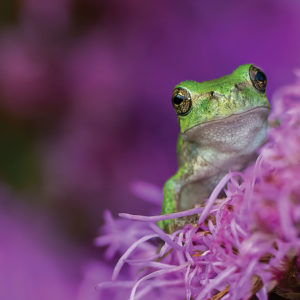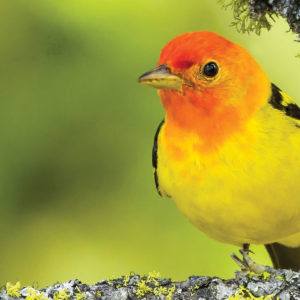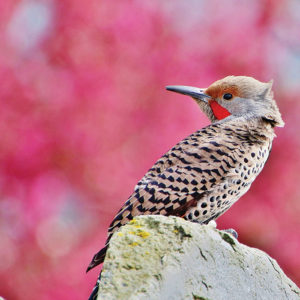December Calendar Image: Red Fox
The Red Fox, also known as Vulpes Vulpes, is a species found around the globe. It’s characteristics allow it to adapt well to human environments and it’s got a reputation for its comical cleverness. Best described as a mix between a coyote and a small dog, it’s known the world over for its sly and sneaky nature. Its sharp and pointed face, and relatively light body, allows for both speed and agility. The fox’s confidence isn’t just folklore, the mammal actually chooses to sleep alone out in the open, keeping itself warm by wrapping it’s long, bushy tail around its body.
Settlers originally brought red foxes from Europe into the United States for hunting purposes. Hunting foxes as a sport had been a popular activity in England since the 1500’s, where they were considered vermin, by city-dwellers and farmers alike. Thankfully, today we understand the important part that red foxes play in the ecology of forests and the larger ecosystem.
The nocturnal animal is one of Canada’s most wide-spread mammals. Red foxes can be found in every one of Canada’s provinces and territories, as well as across Asia, Europe, North Africa, Australia and the United States.
Despite its name, the red fox is not always red in colour. From brown, black to even a silver-tinge, the red fox is a vibrant animal in more ways than one. It’s lengthy, thick tail makes up one-third of its entire body length and it’s fantastic hearing allows the red fox to hear low-frequencies. This superior hearing allows them to catch small, underground prey, such as rodents. Although their hunting preference is using the classic sit-and-wait approach, where they watch their prey intensely before pouncing, they can reach up to 50 km/h running if needed.
The red fox has a litter of anywhere between one to ten pups annually. When the pups are around seven months old, they can hunt by themse
lves and begin leaving home. Many red foxes have traveled up to 250 km away to find their humble abode, typically making their homes in meadows or wooded areas, although many have habitats in the deserts, the Canadian tundra or grasslands. Once they reach maturity, red foxes weigh in at around 3-14 kg and have a total body length of 90 to over 110 cm.
The red fox’s cockiness and cunning has made it known to farmers as a chicken thief, often sneaking onto farmland to indulge in a chicken dinner. Although chicken is a tasty meal, the red fox is an omnivore, so berries and plants are also key staples in its diet. Some foxes have been known to travel over 8 km in a single night to find some.
Unlike other wild dogs, foxes are independent and prefer to hunt, eat, and live alone. Maybe it’s during all this free time that they develop their wit? Today, the fox has become a pop culture icon from its role in Wes Anderson’s Fantastic Mr. Fox, to the cunning Robin Hood in the 1973 Disney flick.
The red fox has an average lifespan of 3-6 years. With a stable population, and ‘least concern’ conservation status, the crafty fox will probably continue to thrive and contrive for a long time.



